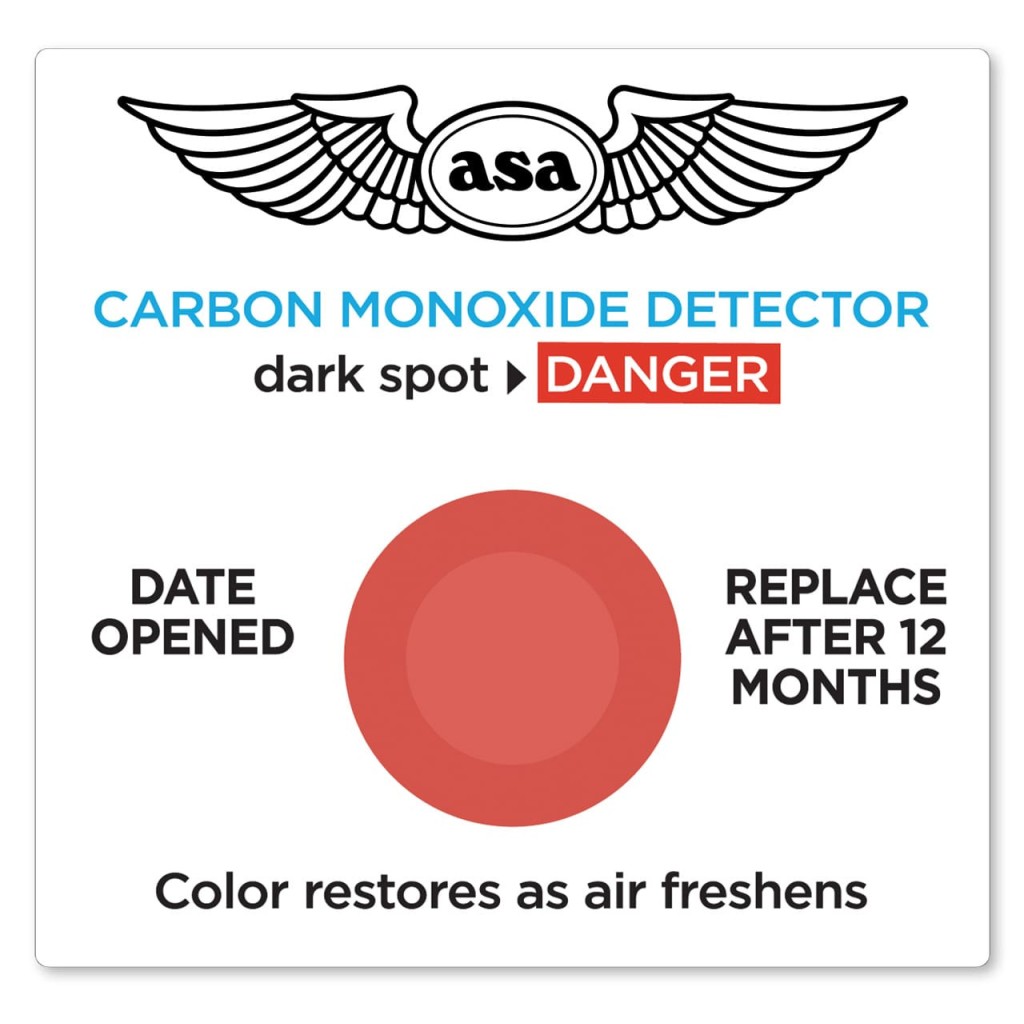

Nu exista produse in cos.
Carbon Monoxide (CO) is a toxic, odorless, and tasteless gas produced by the incomplete combustion of gasoline, kerosene, natural gas, butane, propane, fuel oil, wood, coal, and other fossil fuels. Dangerous levels of CO can be produced by internal combustion engines or from any poorly vented or improperly adjusted fuel-burning appliance. Exposure to CO may cause sickness, headaches, or even death.
This Carbon Monoxide Detector can save a pilot’s life, especially when flying with the heater on, by warning of the presence of CO in the cockpit—the spot will turn gray/black when CO is in the air. The spot on the detector returns to normal color after it is exposed to fresh air.
You can use this CO-DETECTOR as your personal and portable CO detection device. With the adhesive back, stick it on the panel or dash for a semi-permanent installation, or wear it on an ID badge or on a lanyard. Unopened CO-Detectors have a shelf life of 3 years, indicated by the expiration date on the package. Once removed from the packaging, the CO-Detector will last for 12 months.Uses include:
CAUTION: Detector will be damaged by the presence of halogens (iodine, chlorine, bromine), alcohol, ammoniac or nitrous gases. Do not use near diesel engines. Harsh direct sunlight will tend to bleach out indicator spot and shorten useful life.
Shelf Life:
The expiration dates are printed on the package. Typical un-opened shelf life is 3 years and is one year after opening the package. There is a place on the detector itself to write the date opened.
Sensitivity:
Reaction Time
The reaction on the Carbon Monoxide Detector varies with Carbon Monoxide concentration and humidity levels. Reaction time is slightly faster when damp and slightly slower when dry.
Concentration Reaction Time
100 ppm 15-45 min
200 ppm 4-5 min
300 ppm 2-4 min
400 ppm 1-4 min
The detector will turn back to its normal orange color within a few minutes of being exposed to fresh clear air.
These simple detectors are pieces of cardboard with a small orange-colored circle in the middle. If there is a high-level of carbon monoxide in the vicinity, the circle changes color from orange to black. This happens as a direct result of chemistry. The detector circle is gritty and sand-like; it is silica gel impregnated with a catalyst made from chemicals that include palladium and molybdenum salts (such as palladium sulfate and ammonium molybdenate).
When carbon monoxide touches the detector, it's oxidized by the chemical salts on the strip and turns into carbon dioxide. The chemicals on the strip are simultaneously reduced and change color to black. The strip also contains a chemical salt made from a transition metal such as iron, nickel or copper. Once the carbon monoxide is removed, this metal salt steals some oxygen from the air and changes the catalyst back to its original chemical form—so the detector spot changes color back to orange again. In other words, the catalyst regenerates itself in the air.
The advantage of simple detectors like this is that they cost only a few dollars each, so they're a good way to give yourself basic protection. The disadvantage is that these detectors don't sound an alarm: you have to keep looking at them to notice that the color has changed. These strip detectors have to be replaced every 3-6 months depending on the environment you’re using them in; an expiration date is on every package.
Nici un review.